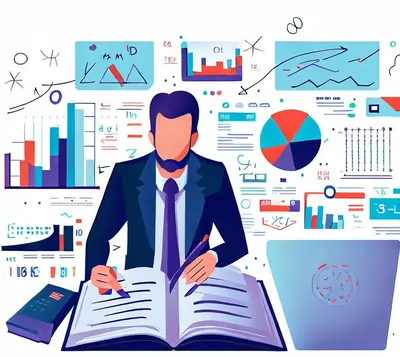Claim Your Discount Today
Get 10% off on all Statistics Homework at statisticshomeworkhelp.com! This Spring Semester, use code SHHR10OFF to save on assignments like Probability, Regression Analysis, and Hypothesis Testing. Our experts provide accurate solutions with timely delivery to help you excel. Don’t miss out—this limited-time offer won’t last forever. Claim your discount today!
We Accept
- Understanding Basic Statistical Concepts
- Descriptive vs. Inferential Statistics
- Probability
- Sampling Techniques
- Data Collection and Presentation
- Data Types
- Data Collection Methods
- Data Visualization
- Measures of Central Tendency and Dispersion
- Mean, Median, and Mode
- Range, Variance, and Standard Deviation
- Probability Distributions
- Normal Distribution
- Binomial and Poisson Distributions
- Hypothesis Testing
- Null and Alternative Hypotheses
- Type I and Type II Errors
- P-Values and Significance Levels
- Regression Analysis
- Linear Regression
- Multiple Regression
- Data Analysis Using Software
- Excel
- Statistical Software (e.g., R, Python)
- Interpreting Results
- Problem-Solving Strategies for Business Statistics Homework
- Understand the Problem
- Choose the Right Technique
- Collect and Organize Data
- Apply Formulas and Equations
- Interpret Results
- Check Assumptions
- Visualize Data
- Validate Your Conclusions
- Seek Help if Needed
- Practice Regularly
- Conclusion
In the dynamic landscape of the business world, the ability to harness the power of data through statistics is becoming increasingly crucial. Whether you're aspiring to be an entrepreneur, a manager, or a student in a business-related field seeking to complete your business statistics homework, a solid grasp of statistical concepts can empower you to make informed decisions and solve complex problems. This blog will delve deep into the pivotal topics you need to comprehend before tackling business statistics homework, accompanied by effective strategies to approach and conquer these problems.
Understanding Basic Statistical Concepts
Before immersing yourself in the intricacies of business statistics, it's essential to lay a robust foundation in fundamental statistical concepts:
Descriptive vs. Inferential Statistics
At the core of statistics lies the distinction between descriptive and inferential statistics. Descriptive statistics involve summarizing and presenting data through measures such as mean (average), median (middle value), mode (most frequent value), and standard deviation (dispersion from the mean). Inferential statistics, on the other hand, enable you to extrapolate insights about a population based on a sample.

Probability
Probability forms the bedrock of statistical analysis. It encompasses concepts such as probability distributions, events (outcomes of an experiment), independent and dependent events, and the laws that govern probability calculations.
Sampling Techniques
A sound understanding of sampling methods is essential. Different techniques, such as simple random sampling (every member of the population has an equal chance of being selected), stratified sampling (dividing the population into subgroups and sampling from each), and cluster sampling (dividing the population into clusters and selecting entire clusters), all have distinct implications for the reliability of conclusions drawn from the sample.
Data Collection and Presentation
Competence in effectively collecting and presenting data is paramount:
Data Types
Data comes in two main types: qualitative (categorical) and quantitative (discrete or continuous). Qualitative data describes qualities or characteristics, while quantitative data deals with quantities and can be further categorized as discrete (whole numbers) or continuous (measurable values within a range).
Data Collection Methods
The methods employed for data collection greatly impact the validity of your analysis. These methods include surveys (structured questionnaires), experiments (controlled studies to establish cause-and-effect relationships), observational studies (gathering data by observing subjects), and secondary data sources (using existing data for analysis).
Data Visualization
Effectively presenting data is a key skill. Utilizing graphical representations like histograms (visualizing frequency distributions), bar charts (comparing categorical data), scatter plots (displaying relationships between two variables), and pie charts (depicting parts of a whole) aid in conveying complex information in an accessible manner.
Measures of Central Tendency and Dispersion
Understanding the measures that unveil central tendencies and dispersion in your data is fundamental:
Mean, Median, and Mode
These measures of central tendency provide insights into where the data is clustered. The mean is the arithmetic average, the median is the middle value, and the mode is the most frequent value.
Range, Variance, and Standard Deviation
These measures quantify the spread or variability of data points. The range is the difference between the highest and lowest values, while the variance and standard deviation provide a more comprehensive view of how data points deviate from the mean.
Probability Distributions
Probability distributions underpin the modelling and prediction aspects of statistics:
Normal Distribution
The normal distribution, often referred to as the bell curve, is a fundamental concept. Understanding its properties and the use of z-scores for analysis is pivotal in various statistical applications.
Binomial and Poisson Distributions
Discrete probability distributions like the binomial (used for binary outcomes, e.g., success or failure) and the Poisson (applied to rare events) are essential tools for solving real-world problems involving uncertain events.
Hypothesis Testing
Hypothesis testing forms the bedrock of data-driven decision-making:
Null and Alternative Hypotheses
Hypothesis testing involves formulating a null hypothesis (no effect or relationship) and an alternative hypothesis (an effect or relationship exists). This framework guides the testing process.
Type I and Type II Errors
Comprehending the concept of errors in hypothesis testing is crucial. A Type I error occurs when you reject a true null hypothesis, while a Type II error involves failing to reject a false null hypothesis.
P-Values and Significance Levels
The p-value indicates the strength of evidence against the null hypothesis. The significance level, often denoted as alpha (α), is the threshold beyond which you consider the p-value as significant evidence against the null hypothesis.
Regression Analysis
Regression analysis facilitates the exploration of relationships between variables:
Linear Regression
Mastering simple linear regression is essential. It involves modelling a relationship between a dependent variable and one independent variable using a straight line, and it's often employed for predictive purposes.
Multiple Regression
In scenarios where multiple factors influence an outcome, multiple regression comes into play. It enables you to model the relationship between a dependent variable and multiple independent variables.
Data Analysis Using Software
Modern statistical analysis often involves leveraging software tools:
Excel
Excel is a versatile tool for basic statistical calculations, data organization, and visualization. It's particularly helpful for those new to statistical analysis.
Statistical Software (e.g., R, Python)
For more complex analyses and large datasets, statistical software like R or Python is invaluable. They provide a wide range of functions and libraries to perform advanced statistical tasks.
Interpreting Results
A crucial skill is the ability to interpret the output generated by statistical software. Translating the numbers and graphs into meaningful insights is key to deriving value from your analyses.
Problem-Solving Strategies for Business Statistics Homework
Incorporating these strategies into your approach to business statistics homework equips you with a comprehensive toolkit for analyzing data, making informed decisions, and deriving actionable insights that drive success in the business world. Consider some of them.
Understand the Problem
Grasping the context and objectives of a problem is the crucial first step. As you carefully read the prompt, immerse yourself in the scenario presented. Identify the key variables at play – these are the data points or factors that have an impact on the situation. Clearly defining what needs to be determined or solved is essential. By gaining a solid understanding of the problem's nuances, you're laying the groundwork for accurate analysis and interpretation.
Choose the Right Technique
The choice of a statistical technique isn't arbitrary; it should be tailored to the problem at hand. Different problems require different approaches. If you're dealing with a dataset and want to understand its central tendencies, measures like mean, median, and mode might be applicable. For comparing groups, a hypothesis test could be appropriate. In situations where you're exploring relationships between variables, regression analysis comes into play. The ability to discern the appropriate technique showcases your mastery of statistical concepts and problem-solving acumen.
Collect and Organize Data
The solid analysis starts with quality data. Ensure that you have the necessary data available for your analysis. If the problem doesn't provide the data, consider how you could gather it through surveys, experiments, or other means. Once you have the data, organize it in a structured format that facilitates easy manipulation and calculations. Organized data streamlines the analysis process and enables you to focus on drawing meaningful insights.
Apply Formulas and Equations
Statistical analysis often involves a series of calculations using specific formulas and equations. Accuracy is paramount here. Employ the relevant formulas accurately, paying attention to each step of the calculation. To eliminate errors, double-check your work. One misstep in a calculation could significantly affect your conclusions, so meticulousness is key.
Interpret Results
Merely presenting numerical results isn't sufficient; you need to give these numbers meaning. Interpret the outcomes in the context of the problem. What do these results indicate about the scenario you're analyzing? Going beyond the numbers and connecting your findings to real-world implications demonstrates your ability to transform data into actionable insights.
Check Assumptions
Statistical techniques often come with certain assumptions that must be met for the analysis to be valid. These assumptions could pertain to the distribution of data, independence of observations, or other factors. Before proceeding with your analysis, verify that these assumptions hold for your data. Ignoring assumptions could lead to inaccurate conclusions and misinterpretations.
Visualize Data
Visual aids such as graphs and charts can be powerful tools to communicate insights effectively. If the data lends itself to visualization, create graphs that provide a visual representation of trends, relationships, or distributions. These visualizations enhance clarity and allow you to convey complex information to others in an accessible manner.
Validate Your Conclusions
Before finalizing your solution, subject your conclusions to rigorous scrutiny. Are there any alternative explanations for your findings? Could errors have crept into your calculations or assumptions? By critically evaluating your conclusions, you're demonstrating intellectual rigour and a commitment to ensuring the accuracy and validity of your analysis.
Seek Help if Needed
No one is an island of knowledge. If you encounter challenges or roadblocks, don't hesitate to seek assistance. Discussing concepts with peers, instructors, or online communities can provide fresh perspectives that help you overcome obstacles and shed light on complex issues you might be grappling with.
Practice Regularly
Mastery of business statistics, like any skill, is cultivated through consistent practice. Engage in a variety of problems, each with its unique characteristics and challenges. This regular practice not only reinforces your understanding of statistical concepts but also enhances your problem-solving skills, making you more adept at tackling new and complex problems.
Conclusion
Proficiency in business statistics transcends rote memorization of formulas. It hinges on comprehending the foundational concepts, their practical applications, and the strategies that guide problem-solving. By mastering these topics and embracing the problem-solving techniques outlined here, you'll embark on a journey of confident exploration in the realm of business statistics. This journey will empower you to make data-driven decisions that catalyze success in the dynamic and evolving business landscape. So, with enthusiasm as your compass, venture into the realm of business statistics and unlock the insights that propel enterprises forward.









